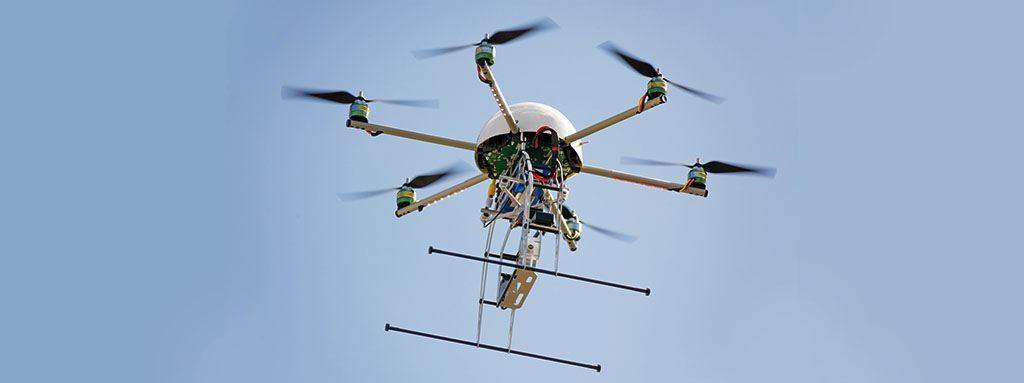When the word ‘drone’ is mentioned, most people think of either military drones used to tackle insurgents, or alternatively quadcopters with on-board cameras used by videographers.
In recent years, multirotor unmanned aerial drones have become increasingly popular, being predominantly used as mobile camera platforms. Their high manoeuvrability makes them far more suitable for this use, compared to the now scarcely mentioned remote control helicopters. The technologies which have enabled this drone revolution include high capacity Lithium-Ion batteries, more compact motors, and increased mobile processing power. This processing power is critical for drones as they are inherently unstable, and therefore rely on their flight control unit to keep them in the air.
Visual navigation is the optimum navigation technology for most autonomous drones, but it is not yet fully mature.
More recently however, the use of drones for commercial purposes has become the focus. For instance, Amazon has popularised the concept of drones for delivering small parcels to cover the ‘last-mile’ of a delivery.
For the aerospace industry, there are many external applications for drones. External uses of a drone are regulated by the FAA (Federal Aviation Administration). In the UK, drones which weigh more than 20kg are applicable to authorisation and flight crew licencing requirements. Drones under 20kg need to be operated in line of sight of an operator but don’t require the operator to have a licence.
With a camera attached, a drone can be used to inspect the externals of a facility. For instance, camera drones are currently being used to make sure that birds’ nests are not blocking gutters. This greatly reduces the inspection time compared to a manual inspection. The drone can also be used to scare birds away, and discourage them from nesting there is the future!
Inspection drones are also being trialled by airlines such as Easyjet. In this case, they are being developed to carry out aircraft pre-flight inspections fully autonomously. The drone has an advantage over a human inspector because they can see the top surfaces of the wings and fuselage very easily.
Drones with cameras are currently being used to provide security surveillance. These drones are normally manually controlled to patrol a certain area, enabling the operator to identify any illicit activity. For future autonomous uses, on-board obstacle avoidance systems may be necessary; these are becoming more and more effective in preventing collisions.
For the construction of a new airport or aerospace facility, drones are assisting with land surveys. Their on-board camera captures high resolution imagery of a potential construction site. Post-processing then uses these images to obtain detailed 2D and 3D surface maps of an area.
There are only a couple of factors which may slow the rapid growth of the industry. The first factor is the lack of drone regulations for external drone use. These regulations are well defined for the use of drones on private land away from the public, but are not so clear about uses near to people. The second limiting factor is the lack of standardisation relating to autonomous drone navigation and obstacle avoidance systems. Visual navigation is the optimum navigation technology for most autonomous drones, but it is not yet fully mature. With the huge economic potential and rapid pace of technology development, both these limitations are likely to be resolved in the very near future. These developments could very likely change the public perception of what a drone is.



